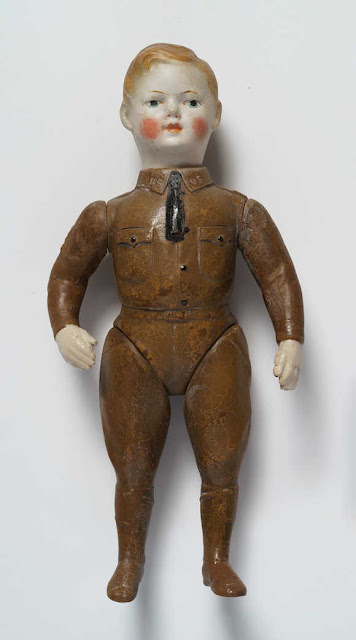James Patton
Manfred Freiherr von Richthofen (1892–1918), familiarly known as the Red Baron, was an obscure cavalry lieutenant in 1914. With the advent of static warfare, his unit was broken up and he was assigned to a supply unit, duty that he found distasteful. He volunteered for aviation service in May 1915, serving as an observer until October, then went through flight training. He flew two-seaters until August 1916, when he finally became a true fighter pilot. He chanced to catch the eye of Oswald Boelcke (1891–1916), known as the “Father of Air Fighting Tactics,” who selected von Richthofen for his elite “Jasta 2“ (short for Jagdstaffel 2). Von Richthofen later formed his own elite squadron, Jasta 11, which out-performed Jasta 2. In January 1917, he painted his Albatros D-III bright red, which led to his famous sobriquet.
 |
| SE-5a of Captain Grinnell-Milne with 56 Squadron Markings |
The Red Baron became a special target for the British Royal Flying Corps for several reasons. First, he shot down a lot of their planes; second, he was in-your-face flamboyant; and third, although of noble background, he was not gentlemanly in his behavior, pursuing his foes ruthlessly. The RFC bore a huge grudge against the Red Baron for hunting down their first ace, Maj. Lanoe Hawker ,VC, who was trying to nurse his shot-up DH-2 back to his lines.
With the mounting success of Jasta 11 and then von Richthofen’s four-squadron Jagdgeschwader 1 (JG1), known as the “Flying Circus”, the RFC decided to create a special "Black" squadron whose primary mission was to hunt down the Red Baron and his ace pilots. In March 1917, No. 56 Squadron was born, staffed exclusively with experienced pilots, some already aces (particularly Capt. Albert Ball, VC), equipped with brand-new SE-5 aircraft, the latest and best available, and dedicated to fighting in packs rather than in dashing mano-a-mano duels, always outnumbering their quarry and luring them into traps.
 |
| Maj. James McCudden's Four-Blade Propeller |
Since the original pilots were all experienced, they tinkered with their aircraft. In particular, Maj. James McCudden, VC, an engineer, supervised changes in engine compression, the exhaust system, the propeller, and the dihedral angle of the top wing, as well as reductions in weight, in order to improve high-altitude performance. With these aircraft, a flight of No. 56 changed its mission and went after the German high-altitude reconnaissance planes, particularly the Rumpler C.VIIs. McCudden died on 9 July 1918 while test-flying a modified SE-5.
In the course of their service, No. 56 scored 427 victories (most in the RFC/RAF) while losing 40 killed and 31 taken prisoner. The squadron had 22 aces, including McCudden (57 victories) and Ball (44).
 |
| Memorial to 56 Squadron Pilot Albert Ball |
No. 56 didn’t get the Red Baron, although they came close, claiming one of his top subordinates, Lt. Werner Voss (48 victories), who in an epic fight was tricked into taking on eight No. 56 pilots, all of whom were aces, and scored hits on all the No. 56 planes before he was shot down. No. 56 also brought down Lt. Kurt Wissemann, who had shot down the French ace Capt. Georges Guynemer (54 victories) 17 days earlier.
No. 56 has had a long and colorful history. Known as "The Firebirds" since 1960, when it transitioned to the RAF’s first supersonic aircraft, the Lightning F-1, today it is an RAF Reserve unit that tests, evaluates, and operates drones; previously, from 1992 until 2008, No. 56 was the only Reserve Squadron operating the Tornado F-3 frontline interceptor.
The squadron has its own website, which you can visit HERE.


































